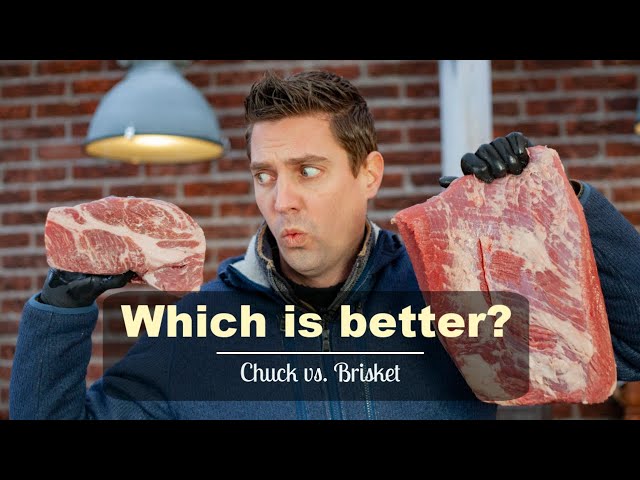
Introduction
Overview of Brisket and Chuck Roast
When it comes to barbecuing, two cuts of beef stand out for their robust flavors and textures: brisket and chuck roast. Each offers a unique experience and can be a centerpiece of any smoked meat feast.
- Brisket: This cut comes from the lower chest area of the cow and is known for its toughness, which transforms into tenderness through low and slow cooking.
- Chuck Roast: Hailing from the shoulder area, chuck roast is rich in intermuscular fat, making it incredibly flavorful and ideal for various cooking methods.
These two cuts not only vary in location but also in their cooking dynamics, appealing to different barbecue enthusiasts.
Importance of Smoking Meat for Flavor
Smoking meat is more than just a cooking method; it’s an art form that infuses flavors and tenderizes cuts. Smoke from various wood types, whether it’s hickory, mesquite, or applewood, deeply penetrates the meat, enhancing its natural taste. Personal experiences often reveal that the anticipation of smoky aromas wafting through the air can ignite a passion for outdoor cooking.
- Flavor Enhancement: The process of smoking breaks down tough meat fibers, resulting in succulent bites.
- Unique Characteristics: Each wood type provides a distinct flavor profile, allowing pitmasters to experiment and cultivate their signature taste.
In summary, the journey of smoking brisket and chuck roast offers not just a meal but an experience filled with delightful flavors and techniques.
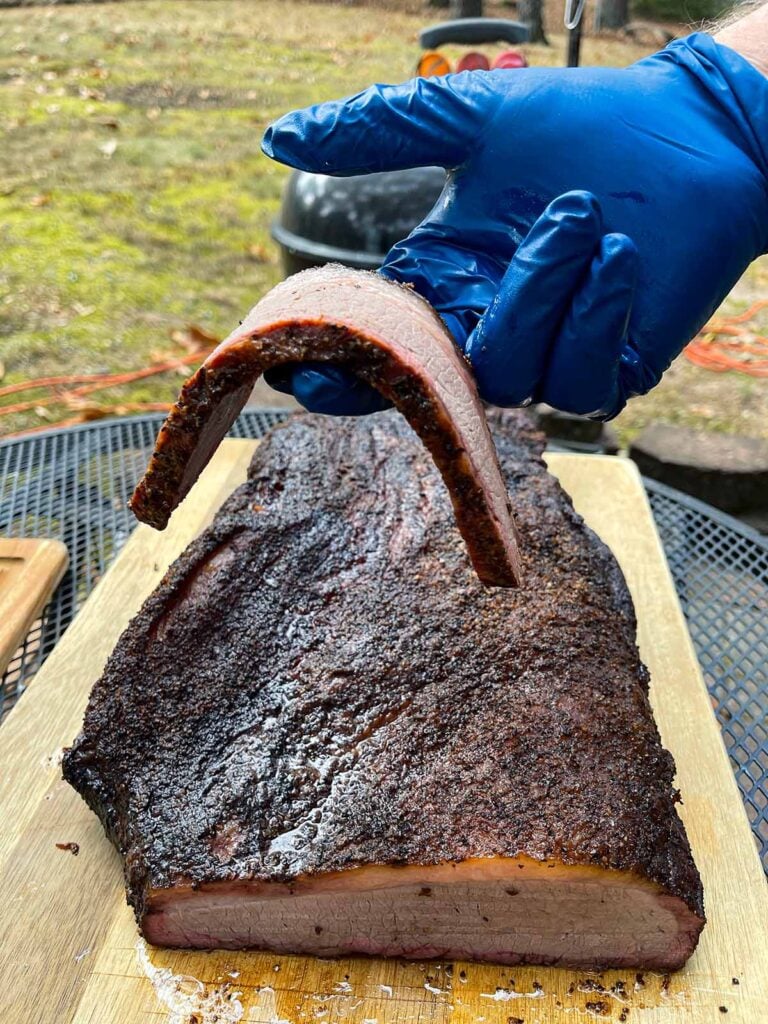
Brisket: The King of Smoking
What is Brisket?
Brisket is a renowned cut of beef that comes from the lower chest of the cow. It consists of two distinct muscles, the flat and the point. The flat is leaner, while the point has a rich marbling of fat, contributing to its unique flavor when smoked. This cut demands patience, as it requires long cooking times to break down its tough fibrous texture into tender, melt-in-your-mouth goodness.
- Muscle Structure: Comprised of the flat and point.
- Cooking Method: Best suited for low and slow smoking.
Why Brisket is Popular for Smoking
Brisket’s popularity in the smoking realm stems from its superb ability to absorb flavors and transform under low heat. The fat content renders down, enhancing the meat’s juiciness and flavor. Many pitmasters consider brisket the ultimate test of skill, as achieving a perfect bark and tenderness is both challenging and rewarding.
- Flavor Absorption: It readily takes on the smoke’s nuances, enriching its flavor profile.
- Culinary Prestige: Often viewed as a rite of passage for barbecue enthusiasts.
Tips for Smoking the Perfect Brisket
To achieve brisket perfection, several key tips stand out:
- Choose the Right Cut: Opt for a brisket with ample marbling to ensure flavor.
- Low and Slow: Aim to smoke at around 225–250°F for 10-14 hours until you reach an internal temperature of 205°F.
- Resting Period: Allow the brisket to rest for at least an hour after smoking to lock in juices.
By paying attention to these details, you can elevate your barbecue game and enjoy the true crown jewel of smoked meat.

Chuck Roast: The Dark Horse
Understanding Chuck Roast
Chuck roast is often the unsung hero in the world of barbecuing. Cut from the shoulder region of the cow, it boasts a hearty composition of muscles interspersed with fat and connective tissue. This combination contributes to its unique flavor and texture when smoked.
- Fat Content: While brisket primarily has fat on the exterior, chuck roast has a substantial amount of intramuscular fat, resulting in juicy, flavorful bites.
- Versatile Cuts: When you purchase a chuck roast, it often includes various sub-cuts, such as the eye, arm, or blade roast, each delivering a distinct experience.
Benefits of Smoking Chuck Roast
Smoking chuck roast offers several advantages, making it a worthwhile contender in the barbecue arena:
- Flavorful and Juicy: The fat content within the meat renders beautifully during the smoking process, adding moisture and a rich flavor.
- Cost-Effective: Chuck roast is generally more affordable compared to brisket, allowing for a hearty meal without breaking the bank.
Many who have smoked chuck roast can attest to its remarkable adaptability, often remarking on how best it performs as shredded beef in sandwiches or tacos.
Techniques for Smoking Chuck Roast
Achieving the perfect smoked chuck roast requires attention to detail:
- Temperature Control: Smoke at a consistent 225–250°F for about 5-6 hours until it reaches an internal temperature of 205°F.
- Wrap and Rest: Wrapping the roast in foil during the last stages of cooking helps retain moisture.
Using a mixture of spices, such as salt and pepper or a hearty beef rub, can elevate the flavor profile, turning this dark horse into a crowd favorite. So, grab a chuck roast, fire up the smoker, and savor the journey!
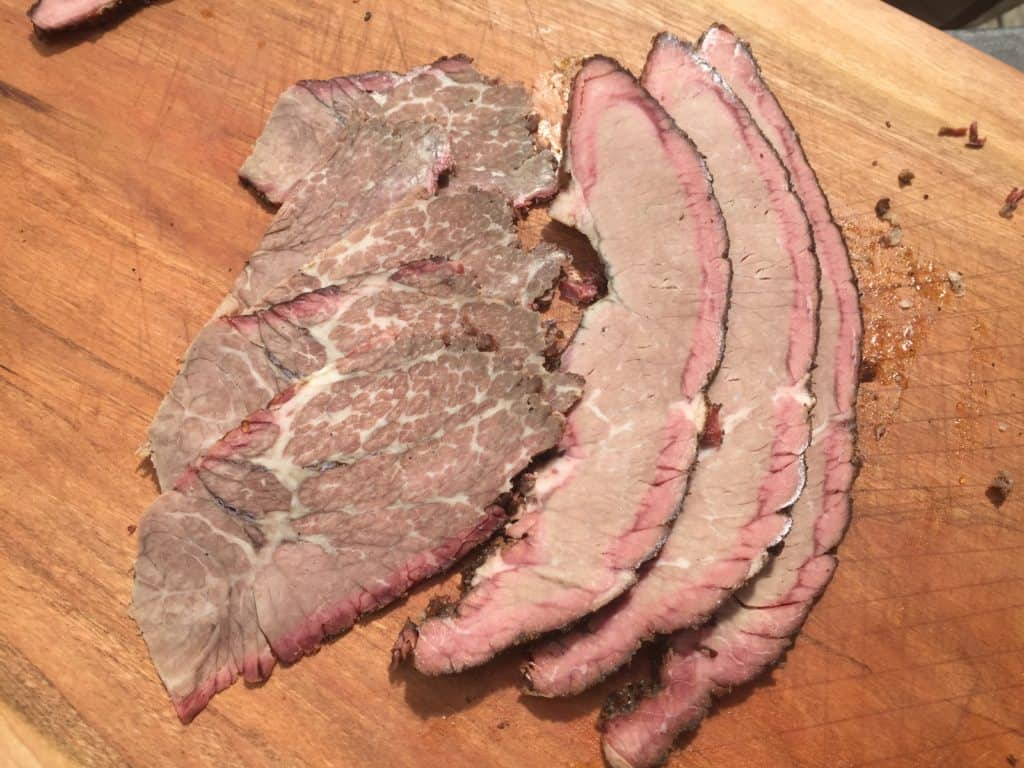
Brisket vs. Chuck Roast: Head-to-Head
Flavor Profile Showdown
When comparing brisket and chuck roast, the flavor profiles illuminate their distinct qualities. Brisket, revered for its deep, rich flavor, is best known for that delicious bark formed during the smoking process. It has a robust taste accompanied by a tender, juicy texture that makes it the star of barbecues.
- Brisket: Rich, smoky flavor with a succulent quality; ideal for those looking for an upscale smoked meat experience.
- Chuck Roast: While chuck also delivers good flavor, it leans slightly milder. The intramuscular fat provides tenderness but doesn’t quite reach the depth of flavor that brisket achieves.
Cooking Time and Techniques Compared
Time and technique differ significantly between these two cuts.
- Brisket: Typically requires a longer cook time, ranging from 10-14 hours at low temperatures (225–250°F), making it a great option for those willing to invest time in their cooking.
- Chuck Roast: Takes only about 5-6 hours to smoke, reaching an internal temperature of 205°F. This faster turnaround can be advantageous for those looking for a delicious smoked meal in less time.
Cost and Availability Analysis
From a cost perspective, both cuts are relatively affordable, though prices can vary by location:
- Brisket: Typically higher in price, especially for high-quality cuts, but valued for special occasions.
- Chuck Roast: Generally less expensive and widely available, making it an attractive option for budget-conscious pitmasters.
Ultimately, choosing between the two comes down to personal preference, cooking time, and occasion. Both cuts have their place in the smoker, with unique benefits that appeal to different palates and cooking scenarios.
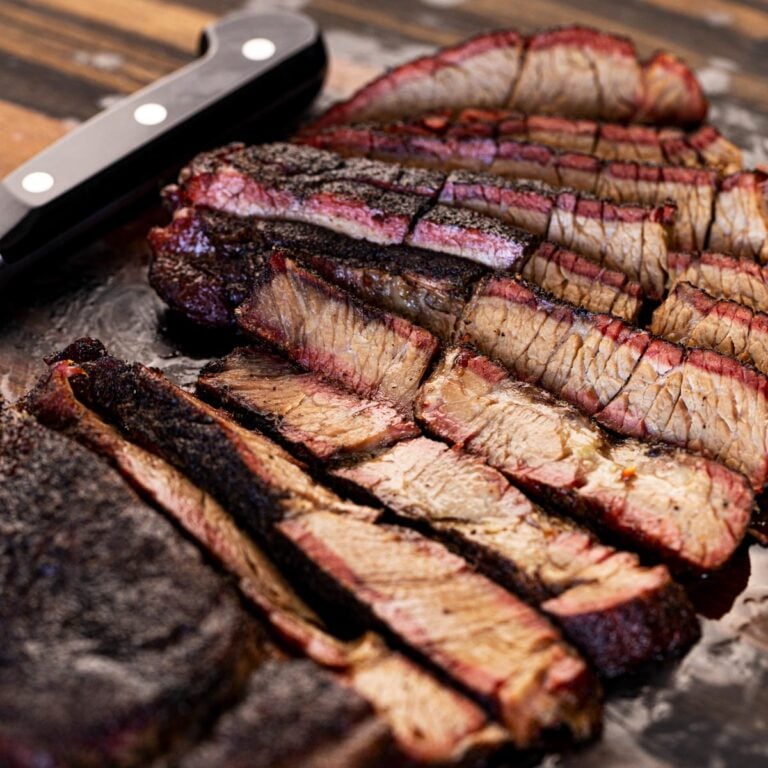
Factors to Consider Before Smoking
Budget and Quantity
Before embarking on your smoking adventure, it’s essential to consider your budget and the quantity of meat you intend to prepare. Smoked brisket can be on the pricier side due to its high demand and premium quality. If you’re serving a crowd, opting for chuck roast can be a more economical choice.
- Cost Considerations:
- Brisket: Generally more expensive but often regarded as a culinary treat.
- Chuck Roast: Typically more affordable, allowing for generous servings without breaking the bank.
- Portion Sizes: Consider how many folks you’ll be feeding. A larger cut like brisket can yield delicious leftovers, whereas smaller cuts may require additional cooking.
Desired Flavor and Texture
The flavor and texture you seek can heavily influence your choice between brisket or chuck roast. Brisket is renowned for its rich, complex flavor and melt-in-your-mouth tenderness after an appropriate smoking period.
- Brisket:
- Offers a pronounced smoky flavor, perfect for those looking to impress guests.
- Ideal for achieving that classic barbecue experience.
- Chuck Roast:
- Has a milder flavor but can still be incredibly satisfying when smoked properly.
- It tends to have more fat inside, which can contribute to a juicy outcome, especially when chopped or shredded.
Cooking Equipment and Space
Finally, consider the cooking equipment and space you have available. Are you working with a small kettle grill or a larger smoker?
- Equipment Needs: A dedicated smoker may produce better results than a standard grill. If space is limited, a smaller cut may be more practical.
- Temperature Control: Proper equipment is crucial for maintaining consistent heat. Whether using a traditional smoker or an electric setup, understanding your tools will lead to better smoking outcomes.
By taking these factors into account, you’ll be well on your way to mastering the art of smoking meat while serving dishes that both you and your guests will savor!
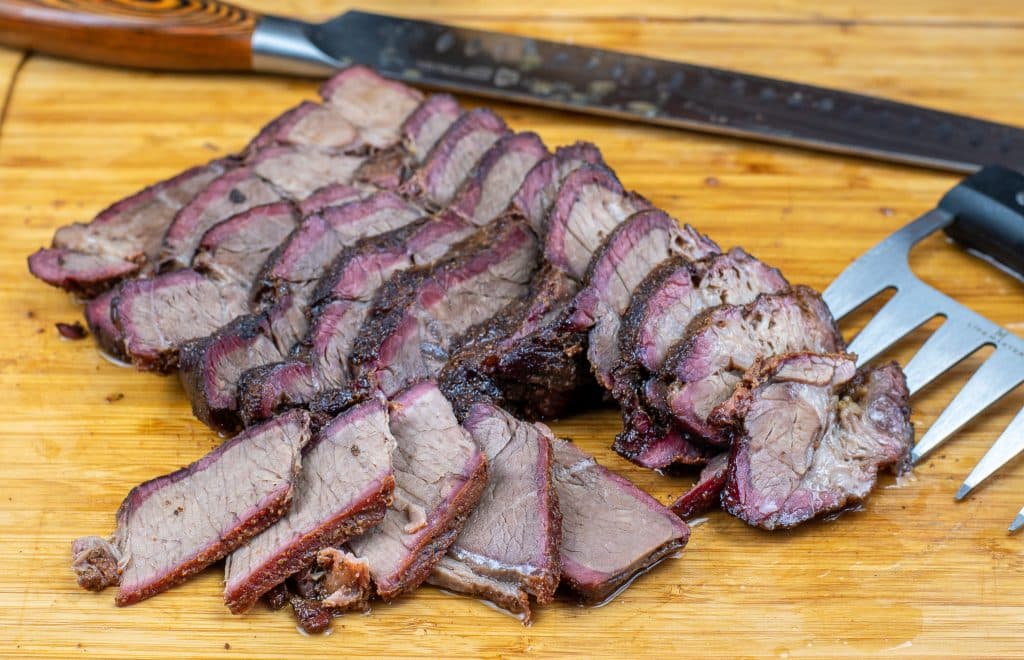
Tips for a Successful Smoking Experience
Preparing the Meat
Successful smoking begins with proper preparation of your meat. Whether you choose brisket or chuck roast, seasoning is crucial. A basic rub of salt, pepper, and garlic powder can enhance the natural flavors, but don’t hesitate to experiment with other spices to suit your tastes.
- Trim Excess Fat: For cuts like chuck roast, consider trimming some excess fat but leave enough to keep it moist.
- Marinate or Brine: If you’re working with lean cuts that tend to dry out, marinating or brining can boost moisture and flavor, helping to achieve that juicy finish.
Choosing the Right Wood
The choice of wood can dramatically affect the flavor of your smoked meat. The type of wood you select should complement the cut of meat:
- Hickory: Offers a strong flavor, great for both brisket and chuck roast.
- Mesquite: A bold choice, particularly good with beef, but be careful not to overdo it!
- Fruit Woods (like cherry or apple): Provide a milder, sweet flavor that can balance the richness of red meats like brisket.
Experimentation here can lead to your perfect flavor profile!
Monitoring Temperature and Smoke
Maintaining a consistent temperature and smoke level is vital for successful smoking.
- Use a Good Thermometer: An accurate meat thermometer will help you monitor your internal meat temperature—it’s your best friend in avoiding dry, overcooked meat.
- Control Smoke Levels: Too much smoke can lead to a bitter taste, while too little can leave your meat flat. Aim for a thin, blue smoke rather than thick, white smoke.
By keeping these tips in mind, you can turn any smoking session into a delectable success! With the right preparation and attention to detail, your smoked dishes will impress everyone at the table.
Conclusion
Summary of Differences Between Brisket and Chuck Roast
As we wrap up our exploration of brisket and chuck roast, it’s clear that both cuts have their unique qualities and charm. Brisket, often viewed as the king of barbecue, is celebrated for its rich flavor, tender texture, and beautiful bark. It’s favored for special occasions and generally requires a longer cooking time to unlock its full potential.
- Brisket:
- High in exterior fat; rich flavor.
- Longer cooking time (10-14 hours).
- Excellent for savory dishes and leftovers.
On the other hand, chuck roast tends to have intramuscular fat, giving it juiciness but requiring care to avoid dryness. It is often considered an economical choice without sacrificing flavor, making it perfect for a more casual barbecue.
- Chuck Roast:
- Rich interior fat; slightly milder flavor.
- Shorter cooking time (5-6 hours).
- Great for shredding or making burritos.
Choosing the Right Cut for Your Smoking Needs
When deciding between brisket and chuck roast, consider your cooking goals. If you’re hosting a special gathering and want to impress, brisket is your go-to. However, for a weekend family meal where convenience and flavor matter, chuck roast can shine and deliver satisfying results.
- Budget-Friendly: If cost is an issue, chuck roast offers a great alternative without compromising flavor.
- Flavor Preference: If rich, smoky taste is your primary goal, brisket is likely the better choice.
Ultimately, both cuts have their place in the smoker, and choosing one over the other will depend on your specific needs, budget, and preferences. Whichever you select, following the right techniques will help you create delicious smoked perfection!

Leave a Reply